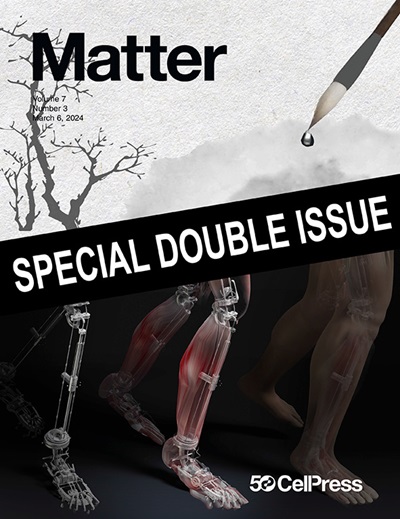掺杂策略增强了Li2S的电子电导率和离子电导率
IF 17.3
1区 材料科学
Q1 MATERIALS SCIENCE, MULTIDISCIPLINARY
引用次数: 0
摘要
得益于其高理论容量,硫化锂(Li2S)有望成为锂离子硫电池的正极材料和传统锂离子电池的预锂化剂。然而,它的电子和离子电导率差,导致其活化电位高,电化学反应动力学缓慢。在快速充电和高质量加载期间,这一挑战更加严峻。掺杂可以通过调节带隙、晶格结构、结晶度、缺陷和颗粒间相来提高Li2S的本征电子/离子电导率,但在这一蓬勃发展的领域缺乏及时的总结。本文讨论了Li2S低电子/离子电导率的来源,并解释了掺杂促进电子转移和离子扩散的机制。综述了近年来掺杂提高Li2S电子/离子电导率的研究进展。最后讨论了未来的发展方向,旨在制备高能量密度、高安全性的先进Li2S正极材料或预锂化剂。本文章由计算机程序翻译,如有差异,请以英文原文为准。


Enhanced electronic conductivity and ionic conductivity of Li2S by doping strategy
Benefitting from its high theoretical capacity, lithium sulfide (Li2S) holds promise as a cathode material in lithium-ion sulfur batteries and as a prelithiation agent in traditional lithium-ion batteries. However, its poor electronic and ionic conductivity results in a high activation potential and sluggish electrochemical reaction kinetics. This challenge intensifies during fast charging and high mass loading. Doping is versatile in promoting the intrinsic electronic/ionic conductivity of Li2S by tuning the band gap, lattice structure, crystallinity, defects, and interphase between particles, but there is a lack of a timely summary in this flourishing field. This review addresses the origin of the low electronic/ionic conductivity of Li2S and then explains the mechanism of how doping promotes electron transfer and ion diffusion. Subsequently, recent research progress about the promoted electronic/ionic conductivity of Li2S by doping is retrospected. Finally, future perspectives are discussed, aiming at preparing an advanced Li2S cathode material or prelithiation agent with high energy density and high safety.
求助全文
通过发布文献求助,成功后即可免费获取论文全文。
去求助
来源期刊

Matter
MATERIALS SCIENCE, MULTIDISCIPLINARY-
CiteScore
26.30
自引率
2.60%
发文量
367
期刊介绍:
Matter, a monthly journal affiliated with Cell, spans the broad field of materials science from nano to macro levels,covering fundamentals to applications. Embracing groundbreaking technologies,it includes full-length research articles,reviews, perspectives,previews, opinions, personnel stories, and general editorial content.
Matter aims to be the primary resource for researchers in academia and industry, inspiring the next generation of materials scientists.
 求助内容:
求助内容: 应助结果提醒方式:
应助结果提醒方式:


